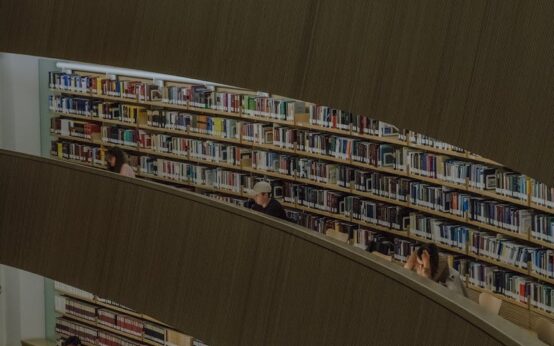How Technology Can Create More Accessible Cities
Ever tried to navigate a crowded city street with a stroller, a heavy suitcase, or crutches? Suddenly, that short flight of stairs without a ramp becomes a mountain. A broken sidewalk is a genuine hazard. A bus that arrives without an audio announcement is a missed connection. For millions of people, these aren’t occasional inconveniences; they’re daily barriers that make city life a constant challenge. But what if our cities could talk back? What if the urban environment could adapt to our needs in real-time? This isn’t science fiction anymore. We’re on the cusp of a revolution where technology is the key to unlocking truly accessible cities for everyone, regardless of age or ability.
It’s about more than just convenience. It’s about dignity, independence, and the fundamental right to participate fully in society. Technology isn’t just adding cool gadgets to our urban landscape; it’s weaving a digital fabric of inclusivity that has the power to dismantle long-standing physical and social barriers. From your smartphone to the lamppost on the corner, a network of smart solutions is beginning to emerge, promising a future where cities are built for people. All people.
Key Takeaways
- Smart Navigation is a Game-Changer: Apps and IoT devices are providing real-time, personalized navigation for people with mobility, visual, or hearing impairments.
- IoT Creates Responsive Environments: Connected sensors can adapt infrastructure like traffic lights and alert maintenance to issues like broken elevators, making cities safer and more reliable.
- Digital Inclusion is Crucial: Accessibility extends beyond the physical world. Accessible government websites, public Wi-Fi, and digital services are essential for full civic participation.
- Co-Design is Non-Negotiable: The most effective solutions are created *with*, not *for*, the disability community. Involving end-users from the beginning is key to success.
The Urban Maze: Why Accessibility Matters More Than Ever
Cities are magnets for humanity. More than half the world’s population lives in urban areas, a number that’s only going to grow. This density creates incredible opportunities for culture, commerce, and connection. But it also magnifies inequalities. A city designed around the “average” person—typically an able-bodied young adult—inevitably excludes vast segments of its population. Think about it. The elderly person who can no longer drive. The parent navigating a double-stroller. The veteran with a prosthetic limb. The tourist who doesn’t speak the local language. And, of course, the millions of people living with permanent disabilities.
Traditional urban planning has often treated accessibility as an afterthought. A ramp added here, a tactile paving strip there. These are important, but they are often piecemeal solutions to systemic problems. The result is a patchwork of accessibility that can be confusing and unreliable. A building might have a ramp at the front, but what about the bathrooms inside? A train station might be accessible, but is the path to get there clear of obstacles? This lack of a holistic approach creates a world of uncertainty and anxiety for those who can’t take mobility for granted. Technology offers a way to bridge these gaps, creating a seamless, interconnected system that puts user needs first.

The Digital Toolkit for Building Accessible Cities
So, how does this actually work? It’s not one single invention, but a whole ecosystem of interconnected technologies. Let’s break down some of the most impactful tools that are reshaping our urban environments.
Navigating with Confidence: Smart Mobility and Wayfinding
Getting from Point A to Point B is the most fundamental urban activity. For many, it’s a source of immense stress. Technology is changing that. You’re probably familiar with Google Maps, but specialized apps are taking navigation to a whole new level.
- For the Visually Impaired: Apps like BlindSquare and Soundscape use a combination of GPS and audio cues to describe the environment in rich detail. They don’t just say “turn left in 50 feet.” They might say, “Cafe on your left, post office coming up on your right,” turning a stressful journey into an exploratory one. Some cities are even embedding Bluetooth beacons in public spaces that communicate directly with these apps, providing hyper-precise indoor navigation in complex places like subway stations or airports.
- For Mobility Challenges: Have you ever followed a mapping app only to be confronted by a massive staircase? Apps like AccessNow and Wheelmap crowdsource information to map out accessible routes. Users can find and share information on everything from ramp access and elevator availability to the location of accessible restrooms. It’s about providing certainty and eliminating the guesswork.
- Real-Time Transit Information: Knowing exactly when your bus or train will arrive is a huge benefit for everyone, but it’s critical for someone who can’t wait outside in harsh weather or who needs to time their journey perfectly. Real-time transit apps, coupled with on-board audio and visual announcements, ensure that public transport is a reliable option for all users.
The Internet of Things (IoT): A City That Responds
The Internet of Things (IoT) refers to the vast network of physical objects embedded with sensors and software that connect and exchange data. It sounds technical, but its impact on accessibility is incredibly human. It allows a city to sense and respond to the needs of its citizens in real-time.
Imagine this: you’re a senior citizen who moves a bit slower. You approach a crosswalk, and a sensor detects your presence (or you tap a button on your phone), and the traffic signal automatically extends the crossing time for you. That’s not a future dream; it’s being tested and implemented right now. Smart streetlights can brighten when they detect a pedestrian, increasing safety. Sensors on public elevators or accessible ramps can instantly report a malfunction to maintenance crews, minimizing downtime and preventing someone from getting stranded. Even something as simple as a smart trash bin that signals when it’s full can prevent overflowing garbage from blocking a sidewalk. It’s about creating a dynamic, intelligent environment that works for us.

Breaking Down Communication Barriers
Accessibility isn’t just about physical movement. It’s also about communication and information. A city can have the best ramps in the world, but if a deaf person can’t understand an emergency announcement in a subway station, the city has failed them. Technology is a powerful tool for bridging these communication gaps.
- On-Demand Interpretation: Services like Aira connect blind and low-vision users to live agents via their smartphone camera, who can describe their surroundings, read menus, or help them navigate. Similarly, video remote interpreting (VRI) services allow deaf or hard-of-hearing individuals to instantly connect with a sign language interpreter for a conversation with a city official or a doctor.
- Hearing Loops: In public venues like theaters, transit hubs, and government offices, hearing loop (or induction loop) systems can be installed. These systems transmit sound directly to a user’s hearing aid or cochlear implant, cutting out background noise and delivering crystal-clear audio.
- Universal Information Kiosks: Modern information kiosks can be designed with adjustable heights, screen-reading software, high-contrast text options, and multiple language support, ensuring everyone can access vital public information.
Real-World Examples: Where Tech is Making a Difference
This isn’t just theory. Cities around the world are already putting these ideas into practice and seeing incredible results. They are becoming living laboratories for inclusive innovation.
Barcelona, Spain, is often hailed as a smart city pioneer. The city has deployed a network of sensors to manage everything from parking to public transit. For accessibility, they’ve implemented an intelligent bus network with real-time information and have installed thousands of sensors that help visually impaired people navigate by sending signals to their smartphones or canes. Their focus is on using data to make public services more efficient and user-centric.
In Singapore, an aging population has spurred the development of tech-driven solutions for seniors. Their “e-Alert” system allows elderly residents living alone to easily call for help in an emergency. They’ve also rolled out smart traffic signals that give seniors and people with disabilities more time to cross the road by simply tapping their concession card on the reader.
These examples show that progress is possible. They also highlight a crucial ingredient for success: political will and community involvement. Technology is a tool, but it needs to be wielded with a clear vision for equity and inclusion.
“The true measure of a smart city isn’t the sophistication of its technology, but the quality of life it offers to all its residents. True intelligence is inclusive.”
The Challenges and The Road Ahead
Of course, the path to fully accessible cities isn’t without its obstacles. We can’t simply airdrop technology into a city and expect it to work miracles. There are significant challenges to consider.
- The Digital Divide: The most advanced technology in the world is useless if people can’t afford it or don’t know how to use it. Ensuring access to affordable internet and smartphones, along with providing digital literacy training, is paramount. We risk creating a new form of inequality if we don’t address this digital divide head-on.
- Data Privacy and Security: Many of these systems rely on collecting user data. How is that data being used, stored, and protected? We need robust privacy policies and transparent practices to build public trust and prevent misuse of sensitive personal information.
- Cost and Maintenance: Implementing and maintaining this technology is expensive. Cities need to develop sustainable funding models and ensure they have the technical expertise to keep these critical systems running reliably over the long term. A broken piece of accessible tech is often worse than no tech at all.
- The Human Element: Perhaps the biggest challenge is ensuring that technology is developed with, not for, the people it’s meant to serve. The principle of “Nothing About Us Without Us” is absolutely critical. Engineers and city planners must work hand-in-hand with people with disabilities, a process known as co-design, to ensure the solutions are practical, user-friendly, and actually solve real-world problems.

Conclusion
Technology is not a silver bullet, but it is an incredibly powerful catalyst for change. By thoughtfully integrating smart solutions into the fabric of our cities, we can move beyond the reactive, piecemeal approach to accessibility and build proactive, universally designed environments. The goal is to create accessible cities where independence is the default, not the exception. A city where a person in a wheelchair can explore a new neighborhood with the same freedom as a marathon runner. Where a blind person can navigate a bustling transit hub with confidence. And where an elderly person feels safe and connected to their community.
The journey is just beginning, and it will require collaboration, investment, and a relentless focus on human-centered design. But for the first time in history, we have the tools to build cities that are not just smart, but also wise, compassionate, and truly welcoming to all.
FAQ
What is the most significant barrier to implementing accessibility technology in cities?
While cost is a major factor, the most significant barrier is often a lack of integration and a failure to involve the disability community from the start. Without a holistic city-wide plan and direct input from end-users (co-design), even the most advanced technology can fail to meet real needs, leading to wasted investment and ineffective solutions.
How does IoT (Internet of Things) specifically help with urban accessibility?
IoT helps by creating a responsive urban environment. For example, sensors can detect when an accessible parking spot is occupied by an unauthorized vehicle and issue an alert. They can monitor elevators and accessible washrooms for maintenance issues in real-time. Smart traffic signals can adapt crossing times based on who is waiting. Essentially, IoT allows the city’s infrastructure to ‘see’ and ‘respond’ to the immediate needs of its citizens.
Isn’t relying on technology for accessibility risky if the tech fails?
Yes, this is a valid concern. Redundancy and reliability are key. Critical systems should have backups, and there must always be non-digital alternatives. For instance, while a navigation app is useful, tactile paving and clear signage remain essential. Technology should be seen as a powerful layer of assistance on top of a foundation of solid, traditional accessible design, not a complete replacement for it.



 Smart Glasses & Lenses: The Future of Wearable Displays
Smart Glasses & Lenses: The Future of Wearable Displays  How the Internet Works: Architecture Explained
How the Internet Works: Architecture Explained  How Satellites Monitor Climate Change: Our Eyes in the Sky
How Satellites Monitor Climate Change: Our Eyes in the Sky  What is Distributed Ledger Technology (DLT)? A Simple Guide
What is Distributed Ledger Technology (DLT)? A Simple Guide  The Ethics of Geo-targeting: Persuasion or Manipulation?
The Ethics of Geo-targeting: Persuasion or Manipulation?  Tech & Travel: A Guide to Sustainable Tourism
Tech & Travel: A Guide to Sustainable Tourism  AI and Blockchain: A Powerful Tech Synergy
AI and Blockchain: A Powerful Tech Synergy  Get a Job in Blockchain: Your 2024 Web3 Career Guide
Get a Job in Blockchain: Your 2024 Web3 Career Guide  Wallet Types Explained: Hot vs Cold & More (2024 Guide)
Wallet Types Explained: Hot vs Cold & More (2024 Guide)  How Venture Capital is Shaping the Crypto Industry
How Venture Capital is Shaping the Crypto Industry  Sentiment Analysis for Crypto: A Trader’s Ultimate Guide
Sentiment Analysis for Crypto: A Trader’s Ultimate Guide  NFTs: The New Key to Membership & Brand Loyalty | Guide
NFTs: The New Key to Membership & Brand Loyalty | Guide